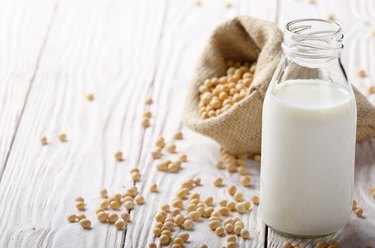MedlinePlus says that a 3-ounce serving of sirloin steak is about the size of a deck of cards or the palm of your hand. A 6-ounce serving is twice that size. Eating a 6-ounce, protein-rich sirloin will help you meet — or exceed — your daily protein needs. In addition to being rich in protein, sirloin steak is packed with essential vitamins and minerals.
Beef is one of the most popular sources of protein in many people’s diets. With its hearty, savory flavor and versatile nature, it’s easy to see why it’s a staple food for protein lovers If you’re wondering just how much protein is packed into a standard 6 oz serving of beef, you’ve come to the right place!
In this article, we’ll break down the grams of protein found in 6 oz of different cuts and types of beef We’ll also discuss why protein is important, how beef protein compares to other protein sources, and tips for picking healthy, lean beef options. Let’s dive in!
How Much Protein is in 6 Ounces of Beef?
The protein content of beef can vary significantly depending on the leanness of the cut and type of beef you choose. Here’s a quick rundown of how many grams of protein are found in 6 oz of some common beef options:
-
Beef sirloin steak (lean): Approximately 52 grams of protein
-
Beef tenderloin (lean) Approximately 42 grams of protein
-
95% lean ground beef: Approximately 36 grams of protein
-
80% lean ground beef: Approximately 24 grams of protein
As you can see, leaner cuts of beef like sirloin steak provide more protein per 6 oz serving compared to fattier varieties like 80% lean ground beef. The leanest ground beef (95%) comes close to sirloin steak in protein content.
In general, most cuts of beef contain around 7 grams of protein per ounce. But the exact amount varies depending on leanness. Trimming visible fat before cooking can boost the protein concentration as well.
Why Is Protein Important in Your Diet?
Now that you know how much protein is in 6 oz of beef, you may be wondering why protein is such an important part of a balanced diet. Here are some of the top reasons to ensure you get enough high-quality protein like beef in your meals:
-
Muscle building and repair: Protein provides amino acids that are the building blocks for growing and maintaining muscle mass. Getting enough protein helps rebuild and repair muscle tissue after exercise.
-
Bone health: Protein plays a key role in bone matrix formation and calcium absorption. Adequate protein intake can help protect bone health and density.
-
Satiety: Protein is one of the most filling macronutrients, keeping you feeling fuller for longer compared to fat or carbs alone. This can help with appetite control and weight management.
-
Immune function: Many proteins help regulate immune system activity and antibody production. Eating protein-rich foods like beef may boost immunity.
-
Enzyme and hormone production: From metabolism-regulating hormones to digestive enzymes, protein is needed to produce the substances that keep your body functioning optimally.
For most adults, health authorities recommend eating at least 0.8 grams of protein per kilogram of body weight (or about 0.36 grams per pound) each day. Active individuals or older adults may need even more. A 6 oz serving of lean beef provides a significant chunk of your daily protein needs.
How Does Beef Protein Compare to Other Protein Sources?
In addition to beef, other high-protein foods include poultry, fish, eggs, dairy, legumes, nuts, and seeds. But gram for gram, beef stacks up well against these other options:
-
A 6 oz beef sirloin steak has about 52 grams of protein. Compare that to 43 grams in 6 oz of salmon.
-
There are 42 grams of protein in 6 oz of beef tenderloin vs. 31 grams in 6 oz of chicken breast.
-
A 1/2 cup serving of black beans has about 15 grams of protein. The same amount of lean ground beef provides 21 grams.
Beef does come with more saturated fat than some other protein sources. But when you choose leaner cuts and cook them appropriately, beef can be part of a very healthy diet. Going for grass-fed varieties when possible also boosts the overall nutrition profile.
Tips for Picking the Healthiest Beef Options
Focusing on the leanest cuts and trimming excess fat can help maximize the protein and nutrition you get from beef while minimizing the less healthy fats:
-
Pick lean cuts like sirloin steak, top round roast, chuck shoulder pot roast, 93% lean ground beef, etc. They have less marbling and saturated fat.
-
Choose extra lean ground beef with at least 90% leanness whenever using ground meat. Avoid fatty regular ground beef.
-
Trim off any visible fat before cooking steaks, roasts, etc. This easily removes several grams of saturated fat per serving.
-
Opt for grass-fed beef when you can find it. It has a better ratio of pro-inflammatory to anti-inflammatory fats than conventional beef.
-
Portion your beef sensibly. Even lean protein sources are high in calories if overeaten. About 6 oz cooked is a healthy serving size.
The Takeaway on Protein in 6 Ounces of Beef
When it comes to protein, beef is one of the best sources available. A 6 oz serving of lean beef can provide over 50 grams of satisfying protein to support muscle growth, immunity, satiety and overall health. Choosing lean cuts, trimming excess fat, and practicing portion control makes beef a nutritious addition to your diet as part of an overall balanced meal plan.

A Hefty Portion of Protein
A 6-ounce portion of beef sirloin steak contains about 52 grams of dietary protein, according to the USDA National Nutrient Database. A woman who eats a 6-ounce sirloin steak will exceed her recommended dietary allowance or RDA. The daily RDA for protein is 46 grams for women and 56 grams for men.



Sirloin Steak Calories and Fat Content
If you trim the fat off your sirloin steak, youll reduce its overall calorie content. The USDA National Nutrient Database reports that a 6-ounce portion of lean top sirloin steak with all the fat trimmed off contains about 312 calories. In comparison, a 6-ounce portion of sirloin trimmed to 1/8 inch of fat provides 414 calories. Eating some of the fat found on sirloin also means youll increase your saturated fat and cholesterol intake, which increases your heart-disease risk when consumed in excess.
How much Protein in Beef cooked? (You’re probably not measuring correctly!)
FAQ
How much protein is in 6oz of cooked beef?
How many grams of protein are in 4 0z of beef?
|
Protein (g)
|
24.19
|
|
Energy (kcal)
|
154.81
|
|
Sugars, total (g)
|
0
|
|
Fiber, total dietary (g)
|
0
|
|
Calcium, Ca (mg)
|
10.17
|
How much protein is in 6oz of grass-fed beef?
|
Package size: 6 oz.
|
|
|
|
Serving Size: 6 oz.
|
|
|
|
Dietary Fiber
|
0g
|
0%
|
|
Sugars
|
0g
|
|
|
Protein
|
36g
|
|
How much protein is in 8 0z of ground beef?
How much protein is in a 6 ounce steak?
It provides about 55 grams of protein per six-ounce steak and contains an array of B vitamins, zinc, selenium, and micronutrients like creatine and carnosine that help our brains and muscles function properly. When it comes to ground beef, a six-ounce serving of 85/15 ground beef contains roughly 32 grams of protein with 26 grams of fat.
How much protein is there in 100 grams of lean beef?
For every 100g of lean meat, there is an average of 32g to 35g of protein, in addition we have 7g of lipids, 84mg of cholesterol and 4. 3g of saturated fat.
How much protein is in a 6 oz of 80/20 ground beef?
By comparison, six ounces of 80/20 ground beef contains around 29 grams of protein with 34 grams of fat. And the calorie content comes in at around 420 per 6 oz serving. 80/20 ground beef is one of the most popular varieties sold in supermarkets because it costs less than leaner varieties.
What is the protein content of cooked beef?
The protein content of lean, cooked beef is about 26–27% ( 2 ). Animal protein is usually of high quality, containing all nine essential amino acids needed for the growth and maintenance of your body ( 3 ). As the building blocks of proteins, amino acids are very important from a health perspective.
